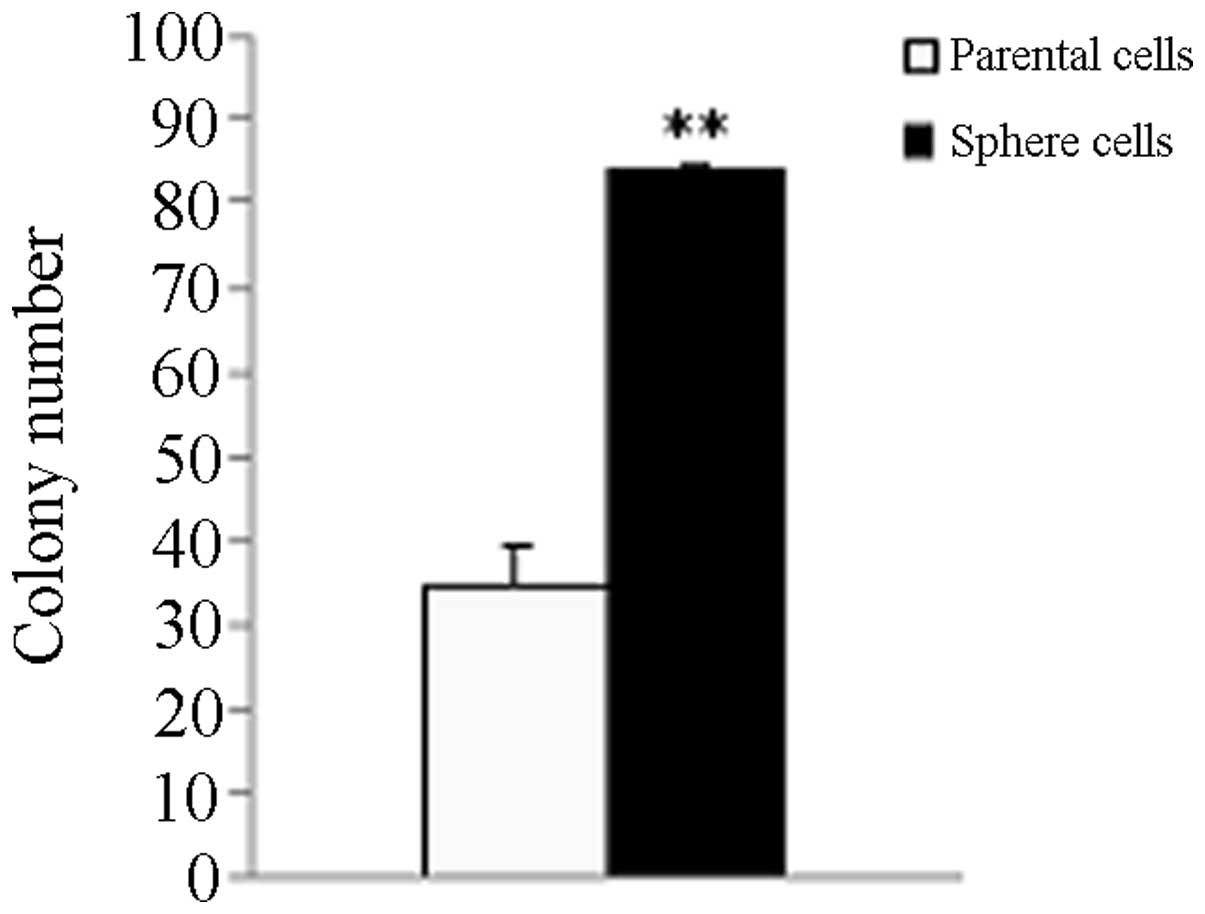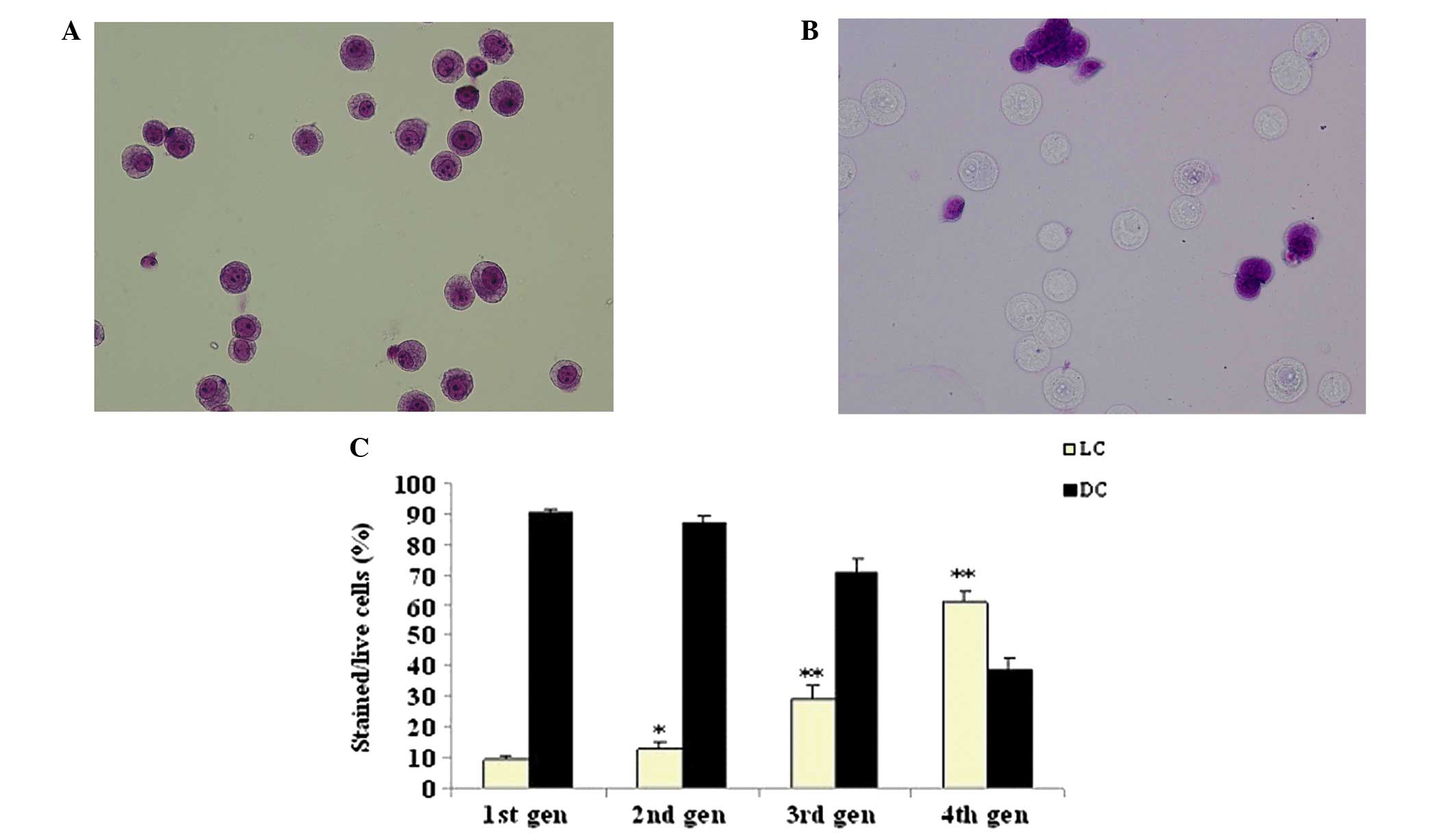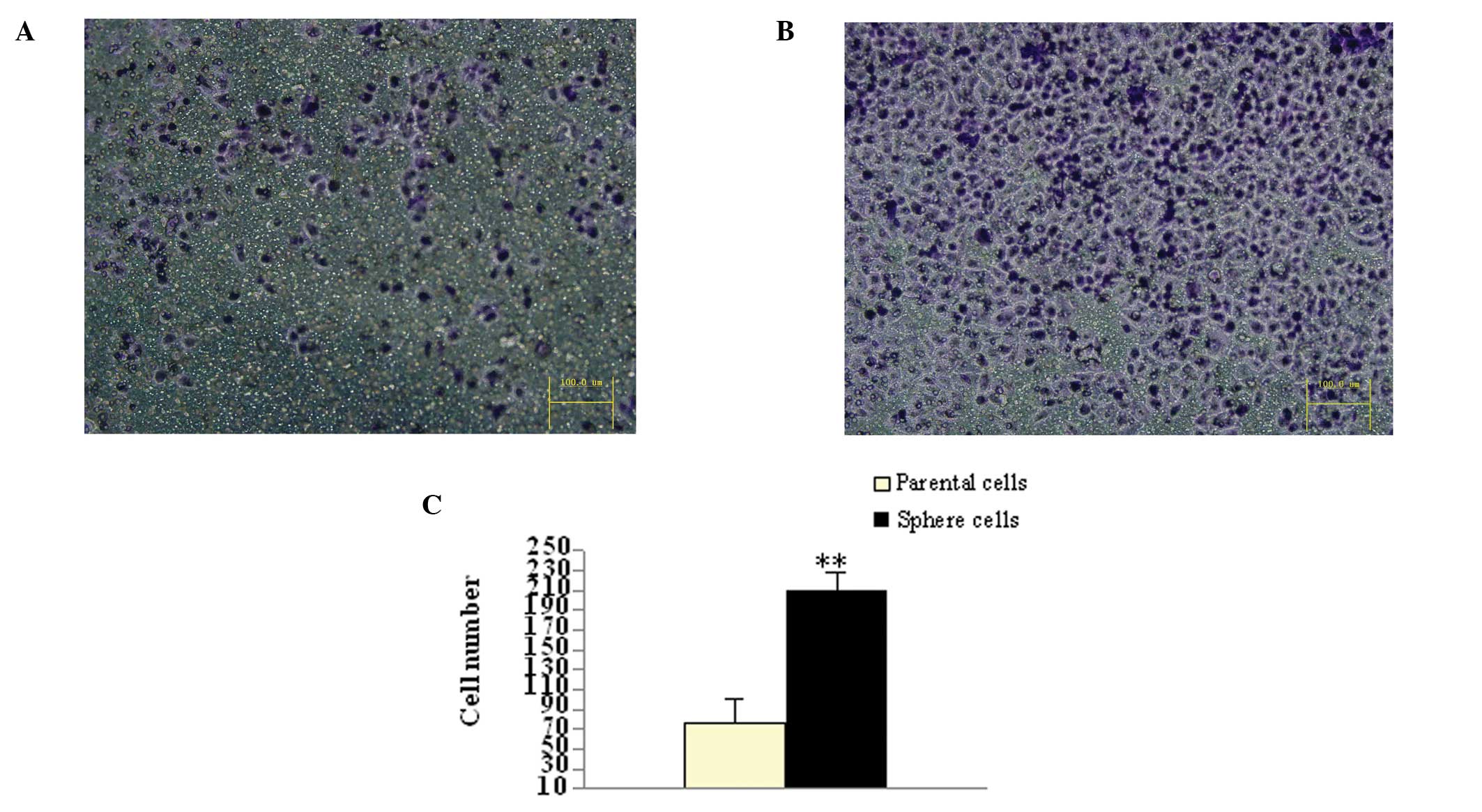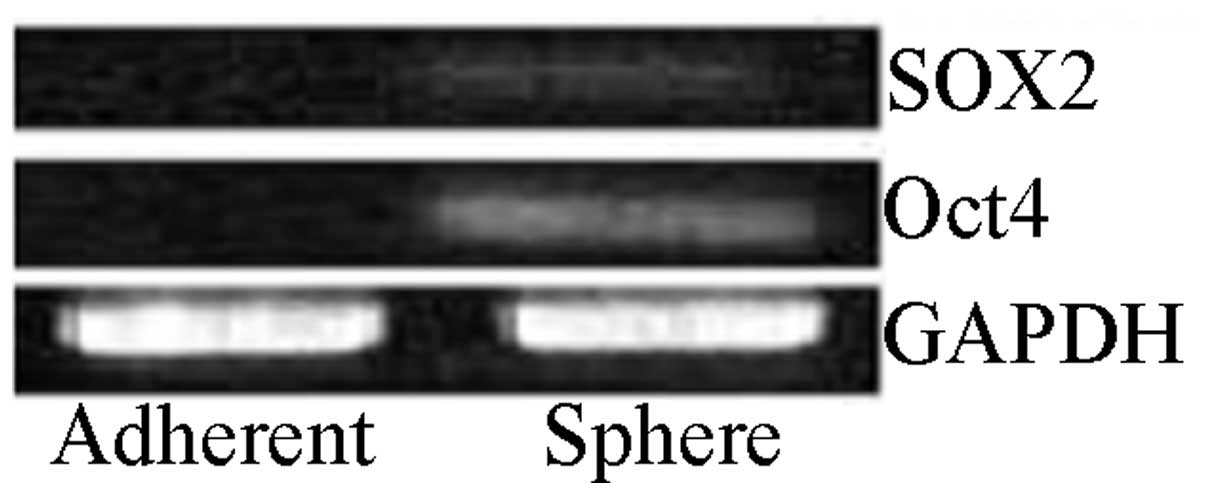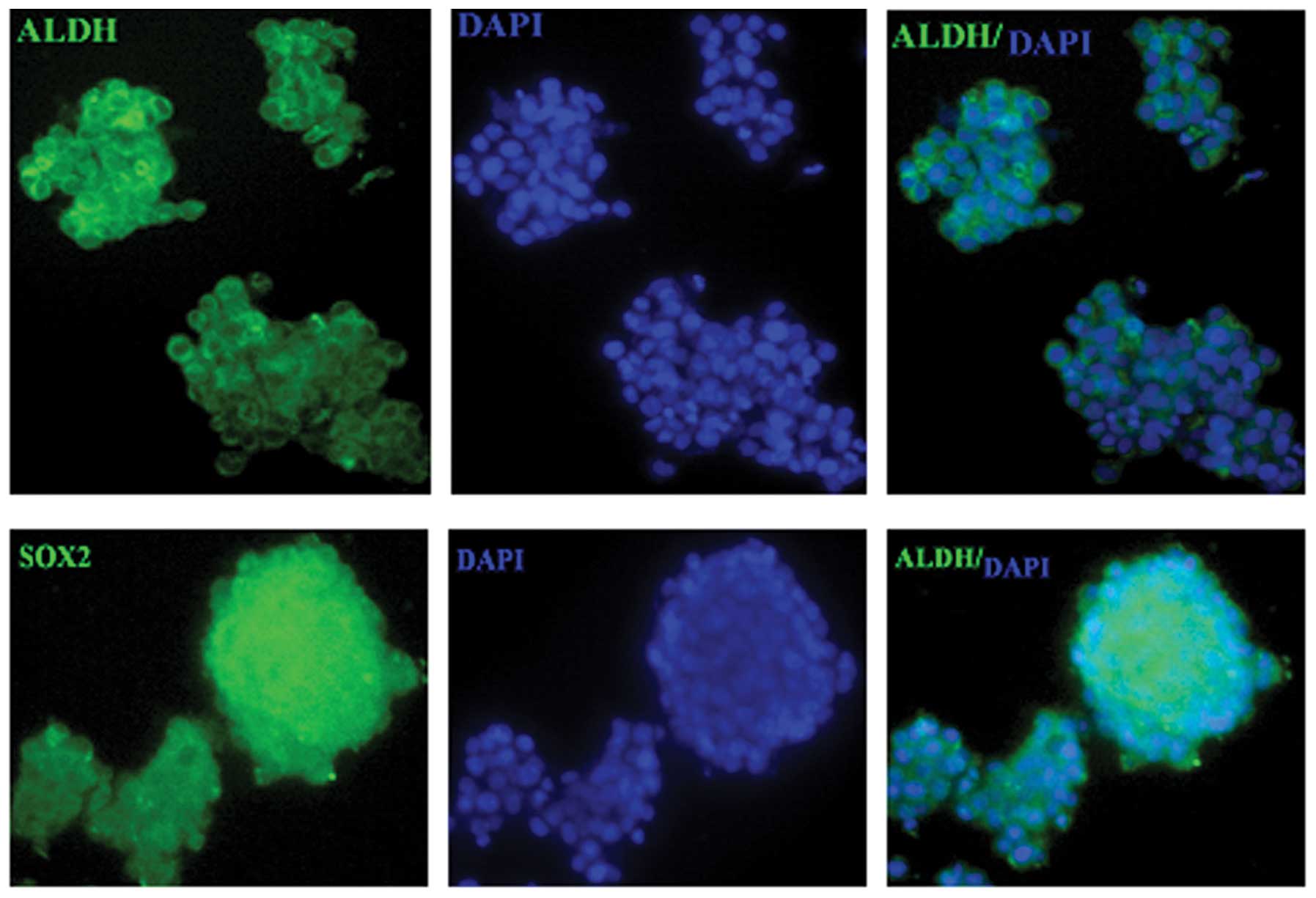|
1
|
Jemal A, Bray F, Center MM, et al: Global
Cancer Statistics. CA Cancer J Clin. 61:69–90. 2011. View Article : Google Scholar
|
|
2
|
Lea JS and Lin KY: Cervical Cancer. Obstet
Gynecol Clin North Am. 39:233–253. 2012. View Article : Google Scholar
|
|
3
|
Green JA, Kirwan JM, Tierney JF, et al:
Survival and recurrence after concomitant chemotherapy and
radiotherapy for cancer of the uterine cervix: a systematic review
and meta-analysis. Lancet. 358:781–786. 2001. View Article : Google Scholar : PubMed/NCBI
|
|
4
|
Pectasides D, Kamposioras K, Papaxoinis G,
et al: Chemotherapy for recurrent cervical cancer. Cancer Treat
Rev. 34:603–613. 2008. View Article : Google Scholar : PubMed/NCBI
|
|
5
|
Ichim CV and Wells RA: First among equals:
the cancer cell hierarchy. Leuk Lymphoma. 47:2017–2027. 2006.
View Article : Google Scholar : PubMed/NCBI
|
|
6
|
Mao XG, Guo G, Wang P, et al: Maintenance
of critical properties of brain tumor stem-like cells after
cryopreservation. Cell Mol Neurobiol. 30:775–786. 2010. View Article : Google Scholar : PubMed/NCBI
|
|
7
|
Cioce M, Gherardi S, Viglietto G, et al:
Mammosphere-forming cells from breast cancer cell lines as a tool
for the identification of CSC-like- and early progenitor-targeting
drugs. Cell Cycle. 9:2878–2887. 2010. View Article : Google Scholar : PubMed/NCBI
|
|
8
|
Su YJ, Lai HM, Chang YW, et al: Direct
reprogramming of stem cell properties in colon cancer cells by
CD44. EMBO J. 30:3186–3199. 2011. View Article : Google Scholar : PubMed/NCBI
|
|
9
|
Zhang L, Jiao M, Li L, et al: Tumorspheres
derived from prostate cancer cells possess chemoresistant and
cancer stem cell properties. J Cancer Res Clin Oncol. 138:675–686.
2012. View Article : Google Scholar : PubMed/NCBI
|
|
10
|
López J, Poitevin A, Mendoza-Martínez V,
et al: Cancer-initiating cells derived from established cervical
cell lines exhibit stem-cell markers and increased radioresistance.
BMC Cancer. 12:482012.PubMed/NCBI
|
|
11
|
Lee J, Kotliarova S, Kotliarov Y, et al:
Tumor stem cells derived from glioblastomas cultured in bFGF and
EGF more closely mirror the phenotype and genotype of primary
tumors than do serum-cultured cell lines. Cancer Cell. 9:391–403.
2006. View Article : Google Scholar : PubMed/NCBI
|
|
12
|
Hueng DY, Sytwu HK, Huang SM, et al:
Isolation and characterization of tumor stem-like cells from human
meningiomas. J Neurooncol. 104:45–53. 2011. View Article : Google Scholar : PubMed/NCBI
|
|
13
|
Zhong Y, Guan K, Guo S, et al: Spheres
derived from the human SK-RC-42 renal cell carcinoma cell line are
enriched in cancer stem cells. Cancer Lett. 299:150–160. 2010.
View Article : Google Scholar : PubMed/NCBI
|
|
14
|
Chen SF, Chang YC, Nieh S, et al:
Nonadhesive culture system as a model of rapid sphere formation
with cancer stem cell properties. PLoS One. 7:e318642012.
View Article : Google Scholar : PubMed/NCBI
|
|
15
|
Ponti D, Costa A, Zaffaroni N, et al:
Isolation and in vitro propagation of tumorigenic breast cancer
cells with stem/progenitor cell properties. Cancer Res.
65:5506–5511. 2005. View Article : Google Scholar : PubMed/NCBI
|
|
16
|
Wedel S, Hudak L, Seibel JM, et al:
Molecular targeting of prostate cancer cells by a triple drug
combination down-regulates integrin driven adhesion processes,
delays cell cycle progression and interferes with the cdk-cyclin
axis. BMC Cancer. 11:3752011. View Article : Google Scholar : PubMed/NCBI
|
|
17
|
Kim MJ, Kim YJ, Park HJ, et al: Apoptotic
effect of red wine polyphenols on human colon cancer SNU-C4 cells.
Food Chem Toxicol. 44:898–902. 2006. View Article : Google Scholar : PubMed/NCBI
|
|
18
|
Hu Y and Fu L: Targeting cancer stem
cells: a new therapy to cure cancer patients. Am J Cancer Res.
2:340–356. 2012.PubMed/NCBI
|
|
19
|
Gilbert CA and Ross AH: Cancer stem cells:
cell culture, markers, and targets for new therapies. J Cell
Biochem. 108:1031–1038. 2009. View Article : Google Scholar : PubMed/NCBI
|
|
20
|
Kim RK, Kim MJ, Yoon CH, et al: A new
2-pyrone derivative,
5-bromo-3-(3-hydroxyprop-1-ynyl)-2H-pyran-2-one, suppresses
stemness in glioma stem-like cells. Mol Pharmacol. 82:400–407.
2012. View Article : Google Scholar : PubMed/NCBI
|
|
21
|
Cheng W, Liu T, Wan X, et al:
MicroRNA-199a targets CD44 to suppress the tumorigenicity and
multidrug resistance of ovarian cancer-initiating cells. FEBS J.
279:2047–2059. 2012. View Article : Google Scholar : PubMed/NCBI
|
|
22
|
Mather JP: In vitro models. Stem Cells.
30:95–99. 2012. View
Article : Google Scholar : PubMed/NCBI
|
|
23
|
Tirino V, Desiderio V, Paino F, et al:
Methods for cancer stem cell detection and isolation. Methods Mol
Biol. 879:513–529. 2012. View Article : Google Scholar : PubMed/NCBI
|
|
24
|
Chinn SB, Darr OA, Peters RD, et al: The
role of head and neck squamous cell carcinoma cancer stem cells in
tumorigenesis, metastasis, and treatment failure. Front Endocrinol
(Lausanne). 3:902012.PubMed/NCBI
|
|
25
|
Zhang SL, Wang YS, Zhou T, et al:
Isolation and characterization of cancer stem cells from cervical
cancer HeLa cells. Cytotechnology. 64:477–484. 2012. View Article : Google Scholar : PubMed/NCBI
|
|
26
|
Pham PV, Phan NL, Nguyen NT, et al:
Differentiation of breast cancer stem cells by knockdown of CD44:
promising differentiation therapy. J Transl Med. 9:2092011.
View Article : Google Scholar : PubMed/NCBI
|
|
27
|
Zheng ZH, Yang Y, Lu XH, et al:
Mycophenolic acid induces adipocyte-like differentiation and
reversal of malignancy of breast cancer cells partly through PPARγ.
Eur J Pharmacol. 658:1–8. 2011.PubMed/NCBI
|
|
28
|
Yan J, Luo D, Luo Y, et al: Induction of
G1 arrest and differentiation in MDA-MB-231 breast cancer cell by
boehmeriasin A, a novel compound from plant. Int J Gynecol Cancer.
16:165–170. 2006. View Article : Google Scholar : PubMed/NCBI
|
|
29
|
Chakraborty A, Bodipati N, Demonacos MK,
et al: Long term induction by pterostilbene results in autophagy
and cellular differentiation in MCF-7 cells via ROS dependent
pathway. Mol Cell Endocrinol. 355:25–40. 2012. View Article : Google Scholar : PubMed/NCBI
|
|
30
|
Zhau HE, He H, Wang CY, et al: Human
prostate cancer harbors the stem cell properties of bone marrow
mesenchymal stem cells. Clin Cancer Res. 17:2159–2169. 2011.
View Article : Google Scholar : PubMed/NCBI
|
















